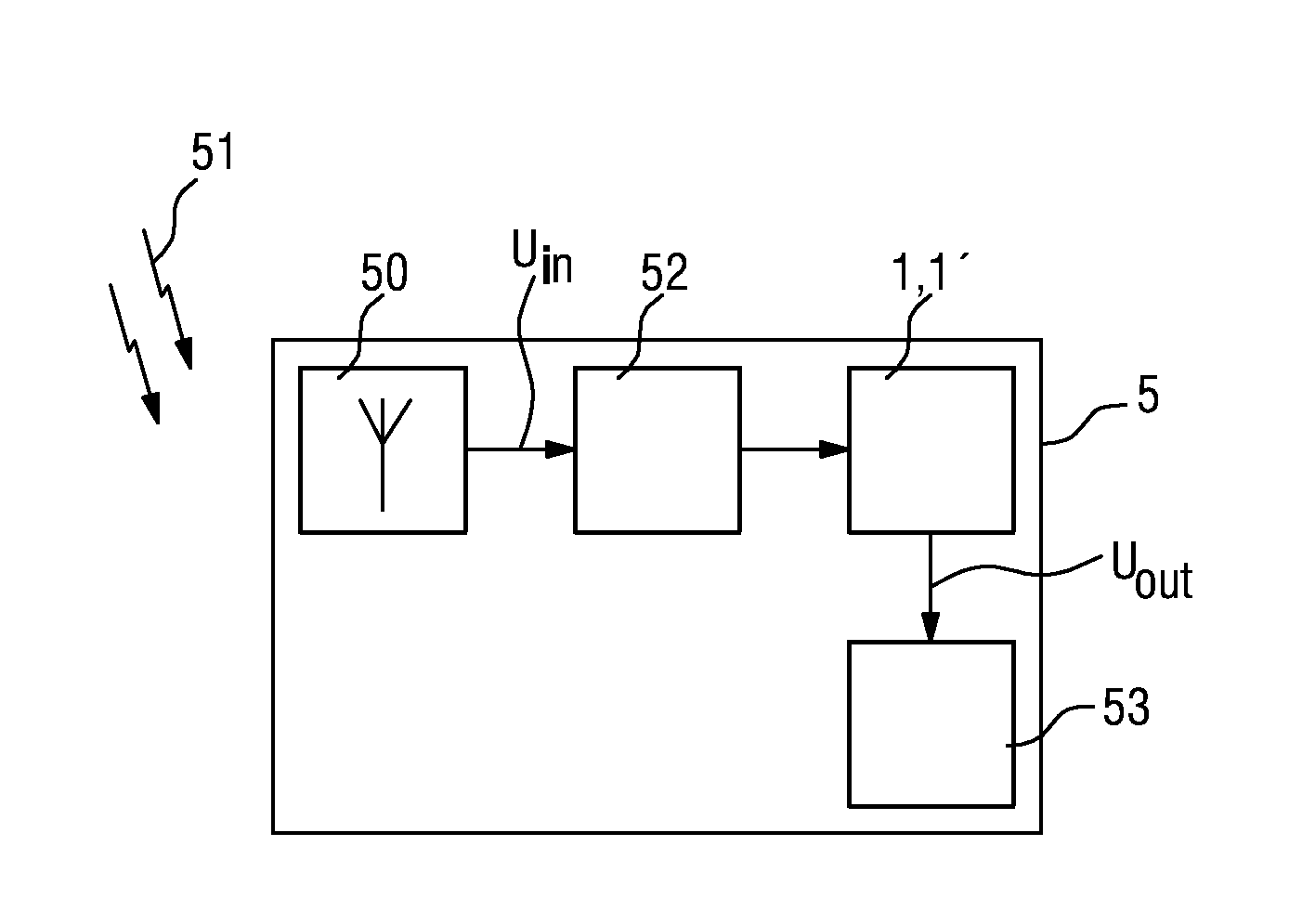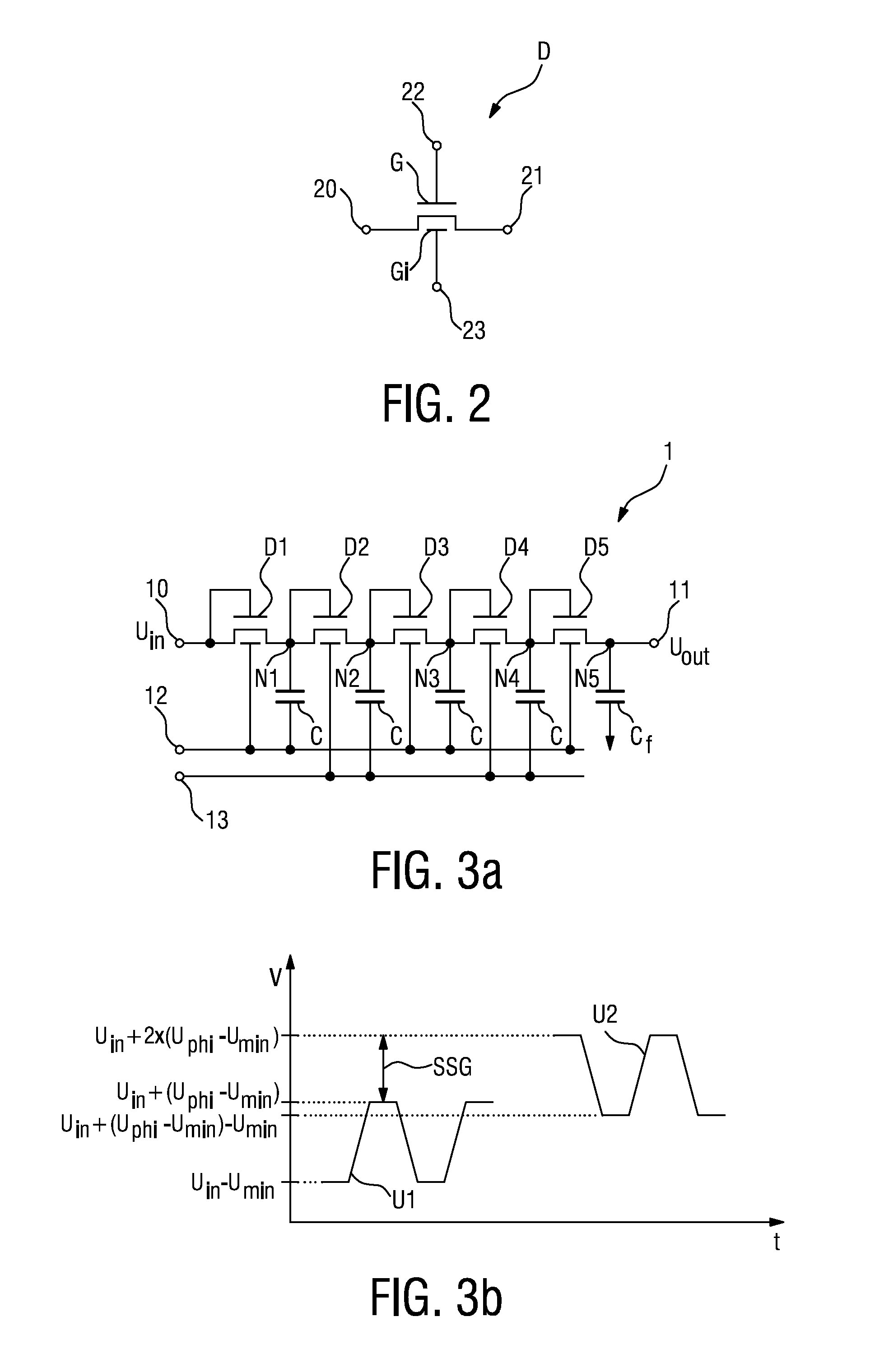Charge-pump circuit
a charge-pump circuit and circuit technology, applied in the direction of power conversion systems, instruments, dc-dc conversion, etc., can solve the problems of reducing the dickson charge-pump becomes quite unsuitable, and the circuitry is correspondingly complex, so as to improve the single-stage gain, improve the boosted output voltage, and improve the gain of the charge-pump
- Summary
- Abstract
- Description
- Claims
- Application Information
AI Technical Summary
Benefits of technology
Problems solved by technology
Method used
Image
Examples
Embodiment Construction
[0042]FIG. 1 shows a state-of-the-art Dickson charge-pump circuit comprising a series of transistor stages. Each transistor stage includes a transistor T1, T2, T3, T4, typically a MOSFET, whose drain is connected to the source of the transistor of the next stage and to a capacitor C, which is also connected to a control voltage node 12, 13. An input supply voltage Uin is applied at an input node 10. First and second control voltage signals Φ1, Φ2 are applied at first and second control voltage input nodes 12, 13 respectively. A capacitor Cf at the output node 11 serves to reduce the ripple on the output voltage Uout.
[0043]The output boosted voltage Uout is dependent on a number of factors, such as the number of transistor stages, the capacitance of the capacitors C, the level of the input voltage Uin and the highest level Uphi of the control voltage signals Φ1, Φ2, the frequency of the control voltage signals Φ1, Φ2 etc. The capacitors C are generally chosen to have the same value, ...
PUM
 Login to View More
Login to View More Abstract
Description
Claims
Application Information
 Login to View More
Login to View More - R&D
- Intellectual Property
- Life Sciences
- Materials
- Tech Scout
- Unparalleled Data Quality
- Higher Quality Content
- 60% Fewer Hallucinations
Browse by: Latest US Patents, China's latest patents, Technical Efficacy Thesaurus, Application Domain, Technology Topic, Popular Technical Reports.
© 2025 PatSnap. All rights reserved.Legal|Privacy policy|Modern Slavery Act Transparency Statement|Sitemap|About US| Contact US: help@patsnap.com



